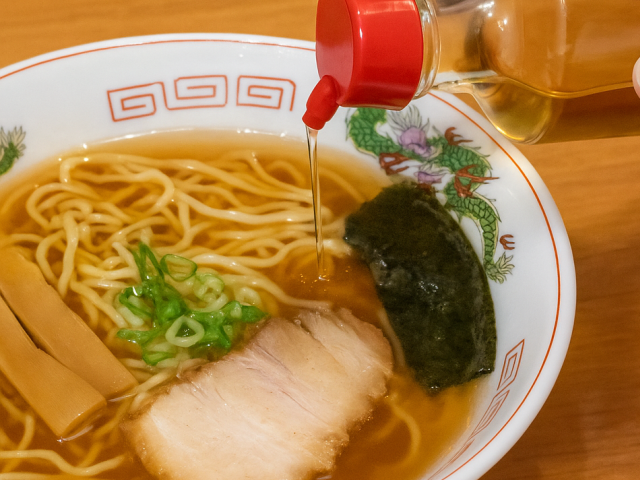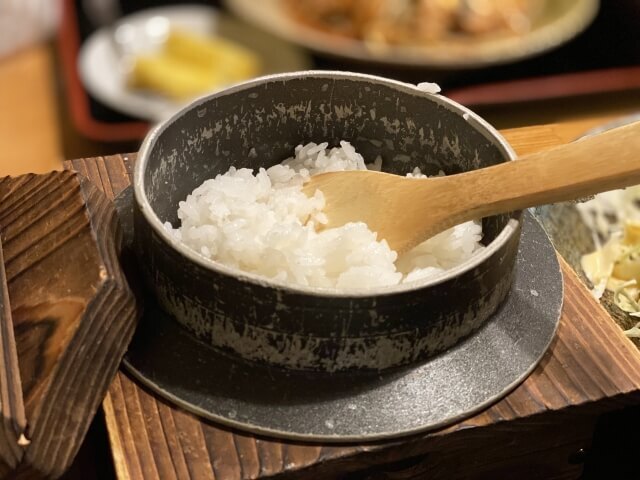[Reviews] Adding vinegar to ramen makes it refreshing and increases its health benefits!
2025/09/13 This site contains advertisements. Category: Special-feature
![[Reviews] Adding vinegar to ramen makes it refreshing and increases its health benefits! アイキャッチ](https://bongheiberg.yamagata.jp/wp-content/uploads/2025/09/ramen_to_su.png)
Have you ever heard that adding vinegar to ramen makes it taste better?
Many people probably wonder, “Does it really work?” and “Will it change the taste?” In fact, adding vinegar makes ramen refreshing and easy to eat, and it can even have health benefits.
In this article, we’ll explain in detail the scientific reasons for adding vinegar to ramen, its actual benefits, precautions to take, and the experiences of people who have tried it. Be sure to check out this “adding a little vinegar technique” that even first-timers can try with confidence.
Why add vinegar to ramen? A scientific explanation of its benefits

It’s widely known that adding vinegar to ramen makes it refreshing and easier to eat. This is thought to be because acetic acid temporarily disperses the oil, lightening the texture. However, there have been no studies directly examining this phenomenon with ramen.
Meanwhile, there have been several research reports on the health benefits of vinegar. For example, there are reports that consuming vinegar suppresses increases in blood pressure and body fat synthesis (Kondo et al., 2001; 2009, Biosci Biotechnol Biochem), and that consuming vinegar with a carbohydrate meal has the effect of suppressing the rise in postprandial blood sugar levels (Johnston et al., 2004, Diabetes Care). Given these findings, adding vinegar to ramen is meaningful not only as a “taste modification” but also as a “health modification.”
Why the greasiness disappears—vinegar separates the emulsion and combats the oily feeling
Ramen soup is an emulsion of oil and water, but adding vinegar separates the emulsion, reducing the oily feeling that spreads in your mouth. This effect is what makes even rich pork bone or back fat ramen feel light aftertaste-friendly.
The mechanism that disperses oil particles to make it easier to eat
The acid in vinegar works to finely disperse oil particles, making the soup smoother and less heavy. It has been scientifically proven that “acid improves the dispersibility of oil,” and this matches the experience you get when you actually eat it.
A bowling technique that brings out the flavor of the soup
Some ramen shops even recommend placing vinegar on the table to change the flavor midway through your meal. The addition of sourness creates a synergic effect of umami and sharpens the soup’s contours. Vinegar especially enhances the aroma of miso or seafood-based soups, giving them a richer, more flavorful taste.
How is adding vinegar good for your health? 3 benefits demonstrated by research

Adding vinegar to ramen isn’t just for flavor. Previous research has shown that vinegar can have health benefits related to blood sugar and blood pressure.
Recovery from fatigue — Lactic acid treatment with citric acid
The biochemical mechanism by which the citric acid in vinegar breaks down lactate in the TCA cycle is theoretically sound, but no research has proven the effect of adding vinegar to ramen. The involvement of the TCA cycle in lactate metabolism is widely known as basic biochemistry.
Suppressing blood sugar rise
A study conducted at Arizona State University in the United States (Johnston et al., Diabetes Care, 2004) reported that consuming vinegar with a carbohydrate-containing meal significantly suppressed postprandial blood glucose levels.
Effects on Blood Pressure and Body Fat
A Japanese clinical trial (Kondo et al., Biosci Biotechnol Biochem, 2009) found that continuous vinegar intake over a 12-week period significantly improved body weight, BMI, visceral fat, and serum triglyceride levels.
Tips and Notes for Adding a Little Bit of Vinegar

While vinegar may seem versatile, adding too much can ruin the flavor of your soup. Here are some tips to ensure you don’t make a mistake.
Appropriate Amount—About 1 teaspoon is the golden ratio
We recommend starting with about 1 teaspoon. If you want to change the flavor midway through, adding more vinegar after 2-3 sips will help you notice the difference.
Be careful not to add too much, but it pairs perfectly with miso and seafood-based ramen.
It pairs perfectly with miso ramen and seafood-based soups, but it can have a strong sour taste when used with shio ramen or light ramen. The key is to add it in small amounts while carefully balancing the flavor.
Cultural customs vary by region and restaurant.
In some areas, such as Fukushima Prefecture, adding vinegar to ramen is a common practice. Restaurants that offer vinegar on the table often recommend it, so it’s worth giving it a try.
Experiences and Reviews

Here are some testimonials from people who have actually tried “Ramen + Vinegar.”
User Review: “It’s refreshing and makes your chopsticks go faster.”
Many people say, “I’ve never really liked heavy ramen, but adding vinegar made it refreshing and I was able to enjoy it all the way to the end.” This effect is especially noticeable with back fat ramen.
It’s a great way to try it when you’re concerned about the oiliness
Some people have even experienced their appetite returning after a night out or when they’re not feeling well. Vinegar also plays a role in easing the burden on the stomach.
Real-Life Review: The “Refreshing + Smooth” Feeling of Miso Ramen
I’ve personally tried adding vinegar to ramen. It adds a tart yet mellow flavor, making it particularly light and easy to eat when added to miso ramen.
On the other hand, adding vinegar to instant noodles can sometimes be too sour for some people’s tastes. This is because the soup’s low fat content makes the sourness stand out.
However, this is also a matter of personal preference, and some people find that adding vinegar to instant noodles tastes better. We recommend giving it a try to see if it suits you.
Easy “vinegar techniques” you can try at home
When eating out, adding just one teaspoon of vinegar to ramen can dramatically change the flavor. Using black vinegar or fruit vinegar will add a mellow flavor and aroma, making it a new way to enjoy ramen.
However, because instant noodles have a soup with little body and fat, the acidity tends to stand out. It’s best to think of this technique as being best suited to rich or miso ramen.
Just a small amount of vinegar can make a big difference in the flavor, so it’s a good idea to start with just 1/2 teaspoon.
Summary | Adding vinegar to ramen transforms it
Adding vinegar to ramen not only adds a refreshing sour aftertaste, but also reduces greasiness, improves health, and enhances flavor, providing numerous benefits.It’s an easy technique for both professional and home use, so be sure to give “a little vinegar” a try the next time you eat ramen. You’re sure to discover a new flavor.


![[Yamagata, Shonai Town] Ramen Shop Tsubaki Karikawa Branch | Popular Menu Items and Limited Edition Ramen デスクトップ向け](https://bongheiberg.yamagata.jp/wp-content/uploads/2025/09/IMG_20250906_140052-1024x768.jpg)


![[Yamagata’s local cuisine] “Hippari udon” is recommended in the summer! “Chilled” recipe on hot days’ cooking アイキャッチ](https://bongheiberg.yamagata.jp/wp-content/uploads/2025/09/29523048_m.jpg)






![[Yamagata, Tendo] Enjoy authentic gelato at the sports park! Made by Italian-trained artisans at “COZAB GELATO” アイキャッチ](https://bongheiberg.yamagata.jp/wp-content/uploads/2025/09/top-scaled.jpg)


![[Yamagata, Shonai] Kumagaya Shrine, the birthplace of Kamenoo | Learn about the life of Kumagai Saburobei, the god アイキャッチ](https://bongheiberg.yamagata.jp/wp-content/uploads/2025/09/熊谷神社.jpg)
![[Yamagata, Tozawa] “Roadside Station Tozawa Kouraikan” Experience of traveling Korea | Korean gourmet food, and souvenirs アイキャッチ](https://bongheiberg.yamagata.jp/wp-content/uploads/2025/10/道の駅とざわ_高麗館9-1.png)
![[Yamagata, Murayama] Link MURAYAMA’s pizza shop “pizza nu-ma” | Delicious pizza tasting report アイキャッチ](https://bongheiberg.yamagata.jp/wp-content/uploads/2025/09/pizza-nu-ma7.png)